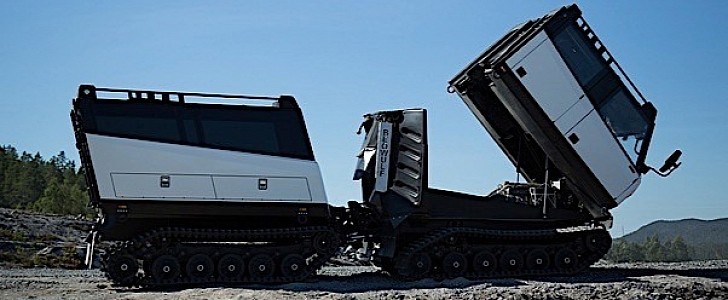It was about a year ago when we first talked about the U.S. Army’s need for a new Cold Weather All-Terrain Vehicle. CATV for short, this type of vehicle is being developed by two companies, all hoping to snatch a contract with the military.
Back in 2021, there were two vehicles on the table: the ST Engineering-based Bronco being developed by Oshkosh Defense, and the Beowulf being cooked up in the BAE Systems ovens.
It is the British company that gave us an update last week on how things are going, by saying it has now submitted a bid for the production of the machine. The move comes just after the Beowulf “completed the prototype evaluation phase of the program.”
These testing procedures, which started in June last year and ended in early 2022, took place over in Alaska, at temperatures as low as minus 50 degrees Fahrenheit (minus 46 degrees Celsius), and even during “one of the most severe winter storms on record.”
According to BAE Systems, the tests comprised “amphibious operations, navigating terrain with varying levels of complexity, starting and operating in extreme cold weather, and most critically, user assessment by soldiers.”
The Beowulf is a tracked, dual body amphibious beast that can carry up to eight tons of cargo, or 14 people, at speeds of as much as 65 kph (40 mph). It can move over pretty much all types of terrain imaginable and can be used for logistical support, disaster and humanitarian relief, search and rescue, and whatever other mission the Army has in mind for it.
“The Cold Weather All-Terrain Vehicle, or CATV, will provide Arctic Warriors a modernized ground platform for extended operations and force projection in the region,” Tim Goddette, the Army’s program executive officer for combat support and combat service support told the Defense Daily last year.
The Army expects the new vehicles to enter service sometime in 2023.
It is the British company that gave us an update last week on how things are going, by saying it has now submitted a bid for the production of the machine. The move comes just after the Beowulf “completed the prototype evaluation phase of the program.”
These testing procedures, which started in June last year and ended in early 2022, took place over in Alaska, at temperatures as low as minus 50 degrees Fahrenheit (minus 46 degrees Celsius), and even during “one of the most severe winter storms on record.”
According to BAE Systems, the tests comprised “amphibious operations, navigating terrain with varying levels of complexity, starting and operating in extreme cold weather, and most critically, user assessment by soldiers.”
The Beowulf is a tracked, dual body amphibious beast that can carry up to eight tons of cargo, or 14 people, at speeds of as much as 65 kph (40 mph). It can move over pretty much all types of terrain imaginable and can be used for logistical support, disaster and humanitarian relief, search and rescue, and whatever other mission the Army has in mind for it.
“The Cold Weather All-Terrain Vehicle, or CATV, will provide Arctic Warriors a modernized ground platform for extended operations and force projection in the region,” Tim Goddette, the Army’s program executive officer for combat support and combat service support told the Defense Daily last year.
The Army expects the new vehicles to enter service sometime in 2023.





